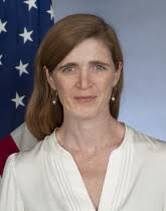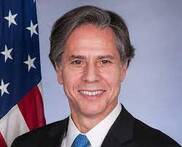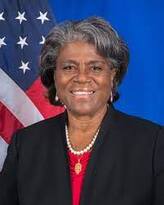Below are questions prepared by various advocacy organizations for Senators and Members of Congress to ask U.S. Administration officials about issues affecting children and youth globally. The questions are shared as samples so that other advocacy organizations can reinforce key messages and echo requests to Congressional leaders and Administration officials. Please help us grow this resource library by submitting your questions to us to post below.
|
Submitted by: Global Campaign for Education- US
|
Research shows that girls in emergencies are disadvantaged at all stages of education and are more likely to be out-of-school than in non-emergency settings. How can the U.S. Government better engage with our partners abroad on critical efforts to build and sustain early childhood education systems that can benefit girls through wars, displacement crises, climate disasters and health emergencies, including the ongoing COVID-19 pandemic? What additional resources are needed?
The House recently passed my bill, the Global Learning Loss Assessment Act, which directs USAID to evaluate the impact of the pandemic on its basic education programs. What else should USAID and other organizations do now to help students and education systems recover from the pandemic and improve the delivery of quality, inclusive education? Especially for girls and other marginalized children and youth? Per the World Health Organization, “the developmental, economic, social, and medical impacts of the global burden of malnutrition are serious and lasting, for individuals and their families, for communities and for countries.” Globally, approximately 29 percent of children under five suffer from malnutrition; and the growing number of people experiencing food and nutrition insecurity during the pandemic is likely to exacerbate undernutrition in low- and middle-income countries. The Global Child Thrive Act authorizes funds to be made available “to support early childhood development activities in conjunction with relevant existing programming” such as nutrition. How can USAID implement the GCTA to support childhood nutrition? How does the lack of an appointed Special Advisor on Children in Adversity affect USAID’s success in intra- and interagency coordination on nutrition, prevention of violence against children, and other areas of importance related to early childhood development? Yesterday, I introduced the Global Malnutrition Prevention and Treatment Act with my colleagues Chair Meeks, Ranking Member McCaul, and Rep. Young Kim. This bill aims to advance targeted and evidence-based interventions for the prevention and treatment of global malnutrition and increases USAID’s interagency coordination on nutrition. How can USAID and its partners work to ensure that resources are targeting the most impacted communities, while also ensuring that nutrition programs are coordinated and integrated with other health and development programs? The Global Child Thrive law makes significant strides to better integrate our approach to child-focused foreign assistance programs. How can the US Government move this even further and implement a cross-sectoral "whole child approach" to foreign policy, considering health, education, gender, and protection and engaging a wide range of actors and a broad spectrum of support systems, including family, school, and community, to ensure children and youth reach their full potential? I am very interested in inclusive education efforts, and I know USAID is making strides in that area. What advice do you have for USAID on how to best incorporate inclusive education as early as possible, as we know the earlier these programs start, the better? |
|
Submitted by: Global Campaign for Education- US
|
More than 90 percent of the world's learners have been impacted by COVID-19-related school closures, and history has taught us that the longer students are out of school, the less likely they are to return. This is even more relevant for vulnerable groups, such as girls and children with disabilities. You have stated that USAID is committed to making education systems more resilient and equitable, including by leveraging partnerships like the Global Partnership for Education (GPE) and Education Cannot Wait (ECW). However, the President's Budget Request proposed funding Basic Education at below FY2021 enacted levels. Specifically, how will USAID support global education and leverage these complementary partnerships?
The Global Partnership for Education (GPE) is the largest global fund solely dedicated to transforming education in lower-income countries. It is a unique, multi-stakeholder partnership that provides financial and technical support to foster educational opportunities in developing countries. In 2020, GPE was the largest provider of education grants in the global COVID-19 response, mobilizing over $500 million to ensure continued learning, school re-openings, and recovery. On July 28 and 29, GPE is holding its Global Education Summit: Financing GPE 2021-2025, a key opportunity to reinstate U.S. leadership in global education. Congress is very supportive of GPE and has urged the administration to make a $1 billion five-year pledge through a letter of support signed by more than 100 Members, congressional resolutions in both chambers, and House report language for the FY22 SFOPs bill encouraging the administration to consider a robust, multi-year commitment to GPE. I echo those sentiments again and would ask how the U.S. Government plans to engage with GPE to support its critical efforts to help partners build and sustain education systems that can function through wars, displacement crises, climate disasters and health emergencies, including the ongoing COVID-19 pandemic? 128 million conflict-affected children lack education services, denying them the right to an education and making them more vulnerable to violence, trafficking, child labor, child marriage, and recruitment by armed groups. Education Cannot Wait (ECW) delivers rapid, collaborative responses to the educational needs of children and youth affected by crises and is the first global movement and fund dedicated to education in emergencies and protracted crises. In 2020, ECW activated its First Emergency Response funding window to re-program current grants and deliver nearly $100 million in new funding to 26 countries in response to the COVID-19 pandemic. ECW relies on support from donors like the U.S. Can you talk about USAID's education work in conflict and crisis settings and how ECW complements this work? There has been strong bipartisan support for the Global Child Thrive Law and the Advancing Protection and Care for Children in Adversity strategy, which focus on young and vulnerable children, respectively. How will USAID support these goals given the wide-reaching impacts of the COVID-19 pandemic on the youngest and most vulnerable, including education loss and increased risk for violence against children? |
|
Submitted by: U.S Youth, Peace and Security Coalition, Search for Common Ground
|
In what ways will USAID prioritize the role of youth and empower them in conflict prevention, resolution, and recovery, recognizing that youth are the majority population in many conflict-affected countries and have a unique role to play in long-term peace and stability?
What steps will you take to ensure the USAID programming will add youth perspectives and concerns into its grantmaking process? Many youth peacebuilders and activists are at-risk of targeted violence. How will you lead USAID to empower, support, and protect youth peacebuilders globally? The secondary effects of the COVID-19 pandemic have disproportionately disadvantaged youth, and especially working youth, one-in-six of whom have left the workforce since the onset of the pandemic. How will USAID work to reverse this trend and jumpstart global youth employment given how unemployment and economic insecurity serve as drivers of conflict and violence? |
|
Submitted by: Global Campaign for Education-US
|
Questions for hearing or record shared with: Reps. Houlahan, Meng, Fitzpatrick, and Senators Van Hollen, Durbin, Cardin, Rubio:
|
|
Submitted by: Catholic Relief Services (CRS)
|
Secretary Blinken, can you share with me the administration’s plans to address the needs of vulnerable children, especially in light of the fact that the secondary impacts of COVID-19 fall most heavily on them?
|
|
Submitted by: U.S Youth, Peace and Security Coalition, Search for Common Ground
|
In what ways will the State Department prioritize the role of youth in conflict prevention, resolution, and recovery, recognizing that youth are the majority population in many conflict-affected countries and have a unique role to play in long-term peace and stability?
Many youth peacebuilders and activists are at-risk of targeted violence. How will you lead the State Department to empower, support, and protect youth peacebuilders globally? |
|
Senate Confirmation hearing for Ambassador Linda Thomas-Greenfield
Submitted by: U.S Youth, Peace and Security Coalition, Search for Common Ground
|
As the nature of violent conflict changes, UN peacekeeping operations are also evolving. UN peacekeepers are trained as security personnel, but expected to understand the causes and symptoms of violent conflict. How will you ensure Missions have the appropriate personnel, strategic vision, and practical skills to ensure civil-military coordination by peacekeeping missions including local governments, peacebuilding organizations, religious actors, women, youth, and other key stakeholders?
|




